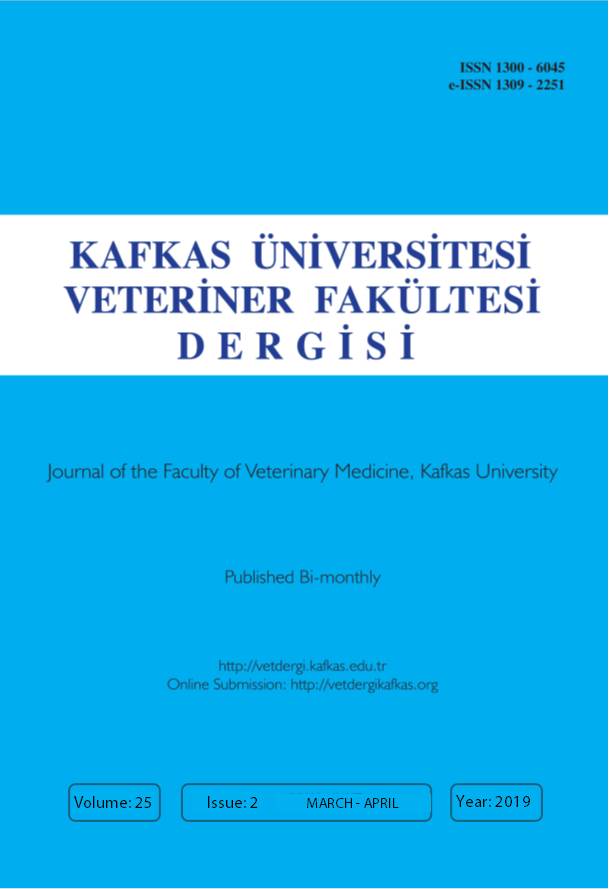
This journal is licensed under a Creative Commons Attribution-NonCommercial 4.0 International License
Kafkas Üniversitesi Veteriner Fakültesi Dergisi
2019 , Vol 25 , Issue 2
Isolation of Ampicillin and Vancomycin Resistant Enterococcus faecium from Dogs and Cats
1Department of Microbiology, Faculty of Veterinary Medicine, Mustafa Kemal University, TR-31060 Hatay - TURKEY
DOI :
10.9775/kvfd.2018.20912
In this study, it was aimed to determine the occurence of ampicillin and vancomycin resistant enterococci (ARE and VRE) species in dogs and
cats, antimicrobial susceptibility and virulence genes (asa1, esp, gelE, hyl, cylA) of the isolates. Minimal inhibitor concentration (MIC) values of
ampicillin and vancomycin were determined by macro dilution method and E-test, respectively. For this purpose, 531 rectal swabs collected
from dogs (n=276) and cats (n=255) from three different cities (İstanbul, Ankara and Mersin) were examined. ARE was detected in 60 (21.7%)
of dogs and in 47 (18.4%) of cats. VRE was detected in one dog and two cats. All ARE and VRE isolates were identified as Enterococcus faecium
by polymerase chain reaction (PCR), and showed multi-drug resistance (MDR) phenotype. A small number of AREfm isolates (4.7%) carried
virulence gene. To the authors" knowledge, the study is first reporting vanA gene harboring VREfm in dogs in Turkey. The results indicated
that both dogs and cats were frequent carriers of AREfm. Due to close contact with humans, dogs and cats may play an important role in the
spread of these nosocomial pathogens in the community. Therefore, further molecular studies are needed to elucidate the possible role of
animal originated AREfm and VREfm strains in human nosocomial infections.
Keywords :
Ampicillin resistance, Cat, Dog, Enterococcus faecium, Vancomycin resistance










